When it comes to making yourself known online, when there are probably hundreds of “you” out there (and by “you” we mean your business), there are a ton of things you can do, like publish SEO-optimized content, build a social media presence, and overall just engage with your target audience where they hang out. But at the end of the day? There’s nothing that will get you more near-instant clicks and conversions than Google Ads.
Yeah, that’s right. Throw a couple of bucks at the right keyword and attach it to some great copy, and suddenly, you’ll find yourself rolling in clicks and new opportunities. You can even scale your ads to grow with your business, running multiple campaigns with different focuses to target different niche audiences for your product or service.
But Google Ads does more than boost your conversions—these little billboards touch basically every part of marketing your brand and showcasing your business online. So whether you’re an alt-clothing company wanting to attract the goths and the punks of the world or a SaaS business that has the BEST product for reducing workloads in finance, you can get in the FACE of the audience that needs to see your offering.
Understanding Google Ads
You've definitely seen them, maybe even interacted with them yourself when you've hit enter on a Google search. Those links at the top, and even the bottom of Google (if you end up scrolling that far) with a little bolded "sponsor" tag above them? Those are Google Ads.

See the little sponsored tag that we highlighted in red in our search for the latest Nike Dunks sneakers? All the images below it are Google Ads as well, just images instead of text.
What is Google Ads?

Google Ads is an online advertising platform developed by Google. Advertisers can display their ads on Google's search engine and its network of partner sites. The platform operates on a pay-per-click (PPC) model, meaning that advertisers pay when users interact with their ads by clicking on them. Google Ads is one of the most effective ways to drive targeted traffic to your website, generate leads, and increase sales. It is essential for marketing for any B2B business or B2C business.
Why Use Google Ads?
Ads can appear on Google's search results pages, within YouTube videos, on websites within Google's Display Network, and more.
One of the key benefits of Google Ads is its ability to deliver highly relevant ads to users actively searching for specific information. This makes it a highly efficient form of advertising, with the potential for significant ROI.
If, in addition to that, you set up Google Analytics 4 server-side tracking, the profits you ultimately get from the ads will be even higher.
The platform provides a range of targeting options, enabling advertisers to tailor their campaigns to target:
- Specific demographics
- Geographic locations
- Different times of the day
But it also goes further than that with Audience Segments.
Audience Segments in Google Ads
|
Category |
Description |
|
Demographic Segments |
|
|
Affinity Audiences |
|
|
In-Market Audiences |
|
|
Life Events |
|
|
Remarketing Audiences |
|
|
Combined Audiences |
Multiple Criteria Segments: Combine different audience segments for specific targeting, e.g., high-income users in-market for laptops. |
|
Audience Targeting Methods |
|
How Companies Waste Their Google Ad Spend

1. Targeting the Wrong Audience
One common way companies waste their Google Ad spend is by targeting the wrong audience. This often happens when businesses use overly broad or irrelevant keywords, leading to clicks from people who aren't interested in their product or service. As a result, they incur high costs while seeing little to no return. Another oversight is failing to incorporate negative keywords, which prevents ads from showing up in irrelevant searches. Without these, companies end up wasting budget on users who are unlikely to convert.
2. Poor Ad Copy
Poor ad copy is another major pitfall. When the messaging in an ad is unclear or unappealing, it reduces click-through rates (CTR) and wastes impressions. If the audience doesn't immediately understand the value or relevance of the ad, they'll simply scroll past it. Also, ads that lack a strong call to action (CTA) miss the opportunity to guide users toward the desired next steps, leading to missed conversions.
3. Not Paying Attention to Mobile
Neglecting mobile optimization is also a critical mistake. Many companies fail to optimize their ads and landing pages for mobile users, who represent a growing portion of internet traffic compared to desktop. This results in a poor user experience and lost opportunities for engagement. Additionally, slow-loading landing pages on mobile devices cause users to abandon the page quickly, costing potential conversions and wasting ad spend.
4. Inefficient Bidding Strategy
An inefficient bid strategy can rapidly drain a company's budget. Overbidding on keywords without closely analyzing their performance can exhaust funds without generating a meaningful return. Similarly, companies that don't leverage Google's automated bidding options may find themselves managing bids inefficiently, especially in competitive markets where costs can fluctuate unpredictably.
5. Not Using Ad Extensions (Callouts, Sitelinks, etc.)
Another way companies waste ad spend is by failing to utilize ad extensions effectively. Ad extensions like callouts, site links, or location extensions help improve ad visibility and engagement, but when they're ignored, companies miss out on valuable opportunities. Even when ad extensions are used, they need to be relevant and aligned with user intent; otherwise, they don't add value and can still lead to wasted spend.
6. Not Setting Up Conversion Tracking
A significant issue arises when companies don't set up conversion tracking. Without tracking conversions, it's impossible to measure the actual effectiveness of campaigns. Without insights into which keywords or ads are driving conversions, businesses risk wasting money on underperforming campaigns. Additionally, if companies fail to analyze and act on this data, they miss out on opportunities to optimize their ads for better performance.
7. Ignoring Google's Quality Score
Ignoring Google's Quality Score can also lead to wasted ad spend. Factors like ad relevance, CTR, and landing page experience all contribute to this score. A low Quality Score means higher costs per click (CPC) and a lower ad ranking, resulting in wasted money if the issue isn't addressed through optimization.
5 Benefits of Google Ads

1. Increased Brand Visibility
- Search Engine Presence: Google Ads ensure that your brand appears prominently in search results, even if your site isn't ranking high organically. This means potential customers searching for relevant keywords will see your brand first, increasing awareness and the chance of clicks.
- Display Network Reach: Google's Display Network extends your brand's visibility across millions of websites, apps, and YouTube channels. This allows for broad exposure and helps you reach new audiences beyond just search engine users.
- Targeted Advertising: One of the biggest strengths of Google Ads is the ability to precisely target audiences based on demographics, geographic location, device types, and specific time periods. This ensures that your ads are seen by the right people at the right time, optimizing exposure and engagement.
2. Effective Lead Generation
- Pay-Per-Click (PPC) Model: The PPC model ensures cost-efficiency, as you only pay when a user clicks on your ad. This means that every dollar you spend goes toward engaging potential customers who are actively interested in your product or service.
- In-Market Audiences: Google Ads allows you to target users who are already actively searching for products or services similar to yours. This leads to higher-quality leads, as you're reaching individuals further along in the buying journey.
- Ad Extensions: With Google Ads, you can enhance your lead generation with ad extensions that provide additional information or actions, such as clickable call buttons, location information, or extra links to key landing pages. These features increase user engagement and provide easier paths to conversion.
3. Measurable Results
- Detailed Analytics: Google Ads offers robust performance data, allowing you to track metrics like CTR, conversion rates, Cost-Per-Click (CPC), and return on ad spend (ROAS). These insights allow you to optimize your ad campaigns and ensure that your budget is being used effectively.
- A/B Testing: Google Ads makes it easy to test different versions of ads, allowing you to experiment with variations in messaging, design, or calls to action as part of your ads strategy. By comparing performance, you can fine-tune your approach to maximize the impact of future campaigns.
4. Scalability
- Flexible Budgeting: One of the key benefits of Google Ads is its flexibility in budgeting. Whether you're a small business with a modest budget or a large enterprise with significant spending power, Google Ads allows you to set budgets that align with your financial goals, offering scalability as your business grows.
- Campaign Customization: Google Ads campaigns are highly customizable, making it easy to tailor them to your specific needs. Whether you're running short-term promotions, seasonal campaigns, or ongoing brand awareness initiatives, Google Ads offers tools that can adapt to your marketing strategies and goals.
5. Fast and Immediate Results
- Quick Campaign Setup: Unlike traditional marketing channels that take time to generate results, Google Ads can deliver immediate visibility once your campaign goes live. You can quickly launch campaigns and start driving traffic, leads, or sales within hours of setting up your ads.
- Instant Market Access: Google Ads enables you to instantly tap into your target market, providing immediate exposure to relevant audiences. This fast market access is particularly beneficial for time-sensitive promotions or product launches, ensuring you reach potential customers as soon as possible.
Conclusion
Google Ads offer businesses an unparalleled opportunity to reach their target audience with precision, efficiency, and flexibility. Whether you're looking to boost brand visibility, generate high-quality leads, or scale your campaigns, the benefits of using Google Ads are clear. With the ability to customize campaigns, track performance in real-time, and achieve fast results, Google Ads remain a vital part of any successful digital marketing strategy.
Need someone to help you manage your Google Ads effectively? Give us a shout!

Lisa Hoffart
Lisa Hoffart is a professional writer with several years of experience crafting well-researched content for a wide variety of industries, from legal, real estate, technology, and more. Lisa is a huge technology geek that loves video games and computers. In her free time, Lisa enjoys sewing, crafting, and hanging out with her cat.












2.png)
2.png)









